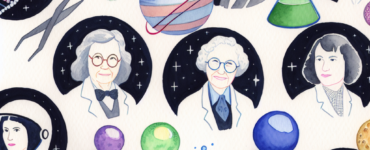Have you ever wondered who the brains behind NASA’s successful space missions were? One name that might not immediately come to mind but undoubtedly deserves recognition is Katherine Johnson. She was a pioneering mathematician whose precise calculations played a crucial role in the success of the United States’ space explorations, including the first American orbit around Earth and the first moon landing1.
Katherine Johnson was born in 1918 in White Sulphur Springs, West Virginia, at a time when opportunities for African-Americans, especially women, were limited. Despite these barriers, Johnson’s brilliance in mathematics was evident from a young age. She graduated from high school at 14 and from college at 18, excelling in all of her math courses2. With a fierce determination to pursue her passion, Johnson’s capabilities led her to join NASA’s predecessor, the National Advisory Committee for Aeronautics (NACA), in 1953.
At NASA, Johnson’s work was pivotal. She was known for her unmatched accuracy in celestial navigation, calculating the trajectory for Alan Shepard, the first American in space, in 1961. Her calculations were also essential for the flight of John Glenn, the first American to orbit Earth, in 1962. Despite the advent of computers, Glenn famously insisted on Johnson’s verification of the orbit calculations before his flight, saying, “If she says they’re good, then I’m ready to go”3. Johnson’s contributions didn’t stop there; she also played a critical role in the Apollo 11 mission, which successfully landed the first humans on the Moon in 19694.
Katherine Johnson’s work at NASA spanned 33 years, during which she broke down racial and gender barriers. Her pioneering contributions were acknowledged when she received the Presidential Medal of Freedom, one of the United States’ highest civilian honors, from President Barack Obama in 20155. Johnson’s life and work have inspired many, highlighting the importance of perseverance, accuracy, and belief in one’s abilities.
Katherine Johnson passed away on February 24, 2020, at the age of 101, leaving behind a remarkable legacy that continues to inspire future generations. Her story is not just one of mathematical genius but also of overcoming seemingly insurmountable barriers with grace and determination. As Johnson once said, “We will always have STEM with us. Some things will drop out of the public eye and will go away, but there will always be science, engineering, and technology. And there will always, always be mathematics”6. This quote not only encapsulates her life’s work but also serves as a beacon of inspiration for young minds everywhere, encouraging them to pursue their passions relentlessly, no matter the obstacles.
- https://www.nasa.gov/centers-and-facilities/langley/katherine-johnsons-stem-contributions-marked-on-her-103rd-birthday/ [↩]
- https://www.nasa.gov/content/katherine-johnson-biography [↩]
- https://www.nasa.gov/feature/katherine-johnson-the-girl-who-loved-to-count [↩]
- https://www.space.com/katherine-johnson.html [↩]
- https://obamawhitehouse.archives.gov/the-press-office/2015/11/16/president-obama-names-recipients-presidential-medal-freedom [↩]
- https://www.nasa.gov/learning-resources/katherine-johnson-a-lifetime-of-stem/ [↩]





































Add comment